9 Best Herbal Tinctures For Menopause
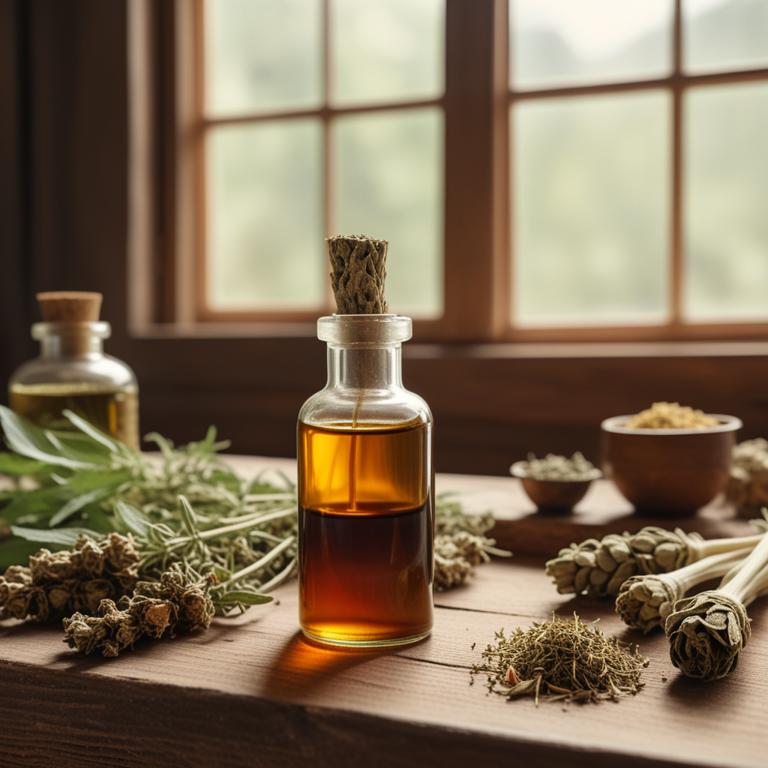
Herbal tinctures for Menopause are concentrated liquid extracts of herbs that are used to alleviate symptoms associated with menopause.
These natural remedies offer numerous benefits, including reducing hot flashes, night sweats, and mood swings, as well as improving sleep quality and hormone balance.
Examples of herbal tinctures used to treat menopause symptoms include Black Cohosh, which is known for its anti-inflammatory properties and ability to reduce hot flashes, Wild Yam, which helps to balance hormones and alleviate menstrual cramps, Maca, which enhances energy and mood, and Red Clover, which reduces hot flashes and night sweats.
Additionally, other herbal tinctures such as Dong Quai, Chasteberry, and Ginkgo Biloba may also be used to treat menopause symptoms due to their ability to regulate hormone balance, improve mood, and reduce inflammation.
According to "Archives of Gynecology and Obstetrics", tinctures for menopause, such as black cohosh, may be beneficial in the treatment of menopausal vasomotor symptoms in some women, based on evidence from published randomised controlled studies.
Below there's a list of the 9 best herbal tinctures for menopause.
- 1. Vitex agnus-castus tinctures
- 2. Cimicifuga racemosa tinctures
- 3. Actaea racemosa tinctures
- 4. Valeriana officinalis tinctures
- 5. Passiflora incarnata tinctures
- 6. Glycyrrhiza glabra tinctures
- 7. Panax ginseng tinctures
- 8. Angelica sinensis tinctures
- 9. Avena sativa tinctures
Also you may be interested in...
TODAY'S FREE BOUNDLE
Herb Drying Checklist + Herbal Tea Shopping List + Medicinal Herbs Flashcards
Enter you best email address below to receive this bundle (3 product valued $19.95) for FREE + exclusive access to The Aphotecary Letter.
$19.95 -> $0.00
1. Vitex agnus-castus tinctures
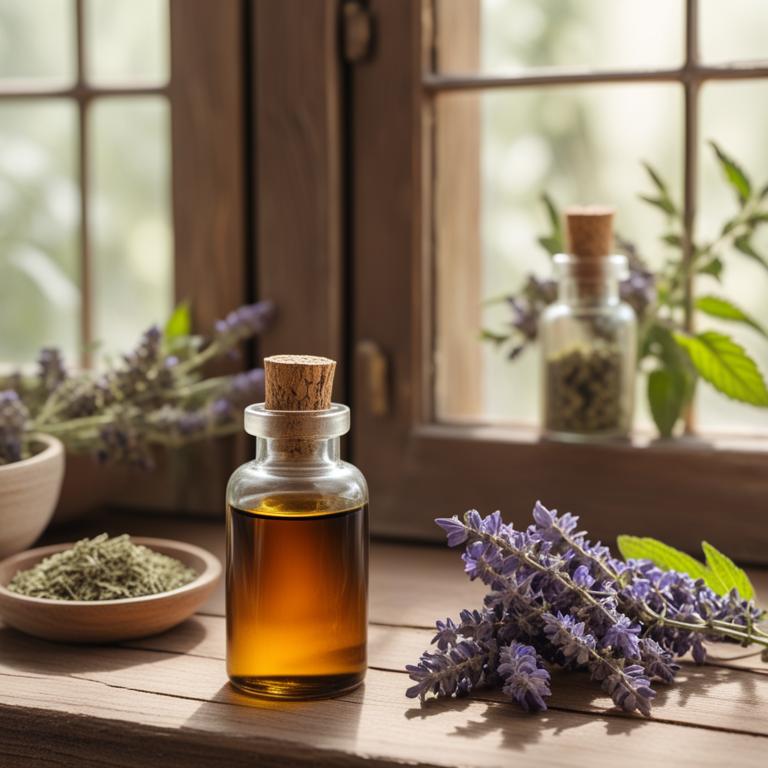
Vitex agnus-castus tinctures have been traditionally used to alleviate symptoms associated with menopause, such as hot flashes, mood swings, and night sweats.
This herbal preparation is believed to help regulate hormonal imbalances and stimulate the pituitary gland, which can lead to a reduction in symptoms.
The bioactive constituents of Vitex agnus-castus, including flavonoids and terpenoids, are thought to be responsible for its therapeutic effects, particularly the flavonoid vitexin, which has been shown to have estrogen-like properties.
The benefits of using Vitex agnus-castus tinctures for menopause symptoms include improved sleep quality, reduced anxiety and depression, and a overall improvement in overall well-being.
Related Study
According to "Electronic physician", Vitex agnus-castus tinctures for menopause have been found to be effective in the treatment of acute menopausal syndrome, specifically in alleviating symptoms such as hot flashes, through various mechanisms.
2. Cimicifuga racemosa tinctures
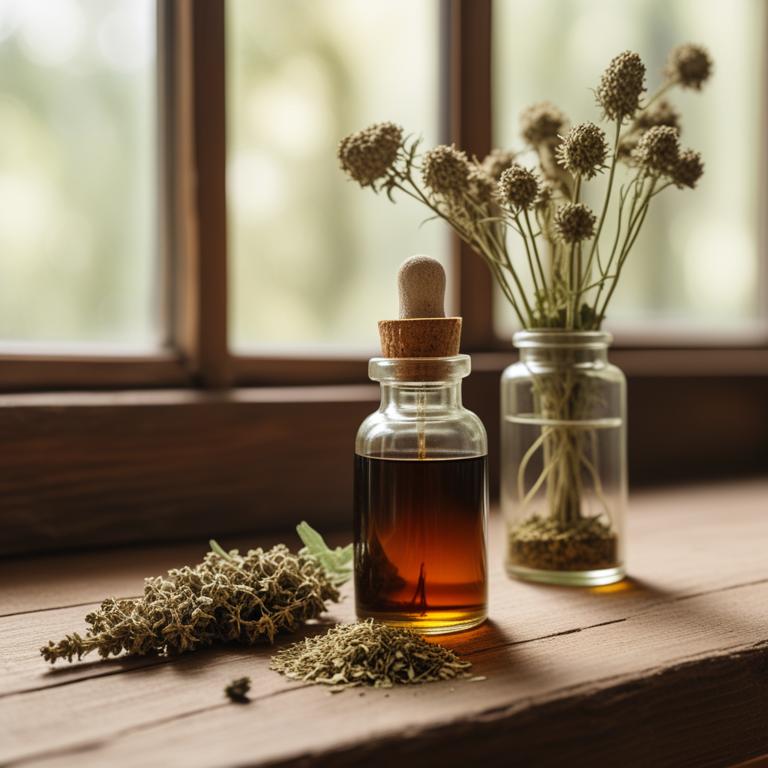
Cimicifuga racemosa tinctures have been traditionally used to treat various menopause-related symptoms, such as hot flashes, night sweats, and mood changes.
This herbal preparation is known for its adaptogenic properties, which help to regulate hormonal imbalances and reduce stress levels, thereby alleviating the symptoms of menopause.
The bioactive constituents of Cimicifuga racemosa tinctures, including ferulic acid, cimicifugic acid, and isobutylamides, have been shown to interact with neurotransmitters and hormones, providing relief from hot flashes and other menopausal symptoms.
The benefits of using Cimicifuga racemosa tinctures to treat menopause-related symptoms include reduced frequency and severity of hot flashes, improved mood, and enhanced overall quality of life.
Related Study
According to "Advances in therapy", Cimicifuga racemosa tinctures for menopause have been shown to have good therapeutic efficacy and tolerability profiles in clinical studies, particularly in alleviating symptoms such as hot flashes, profuse sweating, sleep disturbances, and depressive moods.
3. Actaea racemosa tinctures
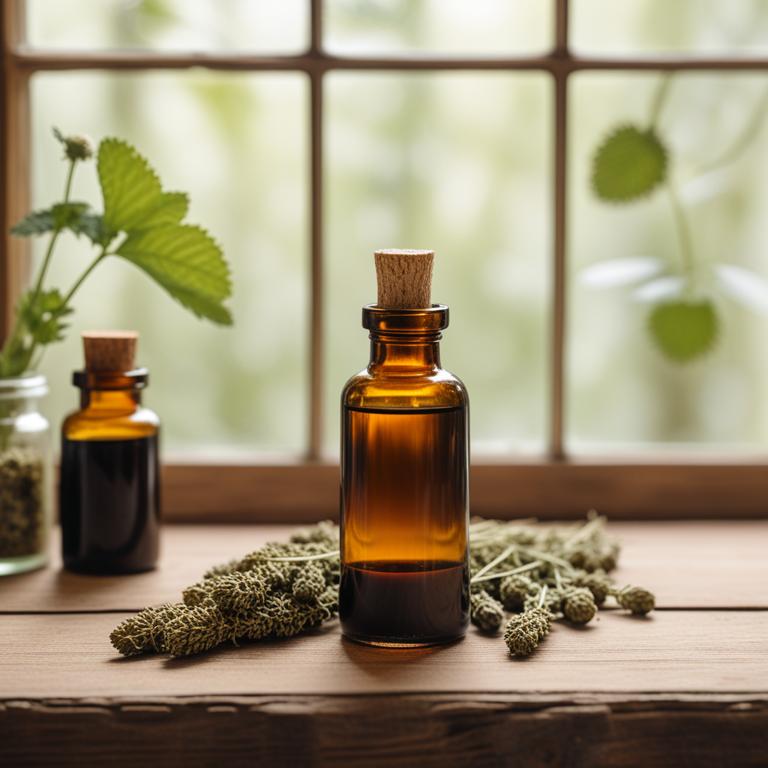
Actaea racemosa tinctures have been traditionally used to treat menopause-related symptoms, particularly those related to hot flashes and night sweats.
The properties of this herbal preparation, including its antispasmodic and antitussive effects, help to reduce the frequency and intensity of hot flashes.
The bioactive constituents of Actaea racemosa, such as phenolic glycosides and alkaloids, are believed to contribute to its therapeutic effects, possibly by influencing hormone regulation and reducing inflammation.
Regular use of Actaea racemosa tinctures may provide benefits in alleviating menopause symptoms, promoting a better quality of life and reducing the need for hormone replacement therapy.
Related Study
According to "Disease-a-month : DM", Actaea racemosa tinctures may help with the symptoms of perimenopause.
4. Valeriana officinalis tinctures
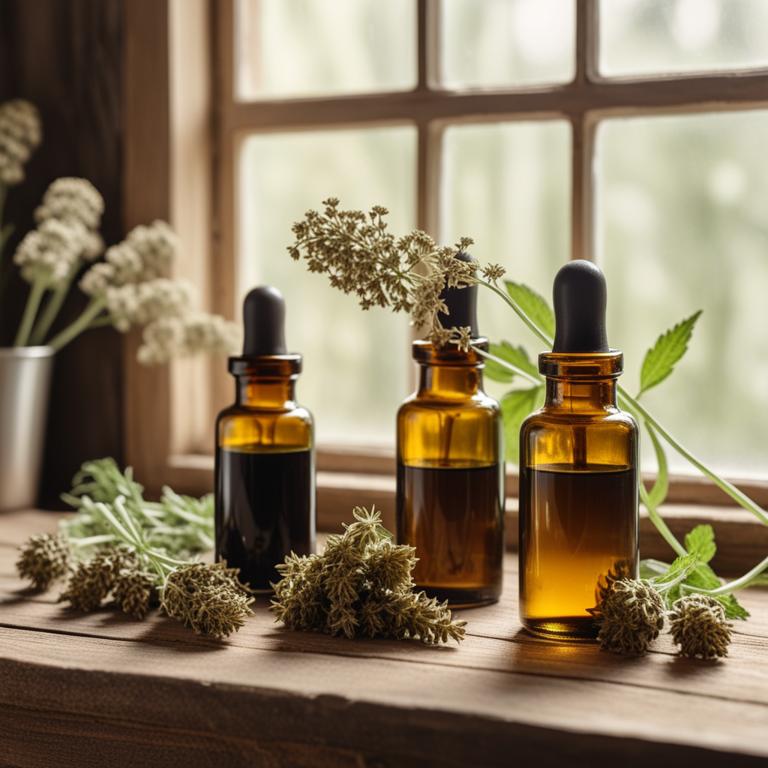
Valeriana officinalis tinctures have been traditionally used to alleviate symptoms associated with menopause, such as hot flashes and sleep disturbances.
This herbal preparation exhibits sedative and anxiolytic properties, helping to calm the nervous system and reduce stress.
The bioactive constituents, including valerenic acid, isovalerenic acid, and valeranone, are responsible for the tincture's ability to modulate the GABA receptor and promote relaxation.
By regulating the body's hormonal balance and promoting a restful night's sleep, Valeriana officinalis tinctures can provide relief from menopause symptoms and improve overall well-being.
Related Study
According to "Electronic physician", Valeriana officinalis tinctures for menopause may be effective in treating acute menopausal syndrome, including hot flashes, as per a study that reviewed clinical trial studies between 1994 and 2016.
5. Passiflora incarnata tinctures
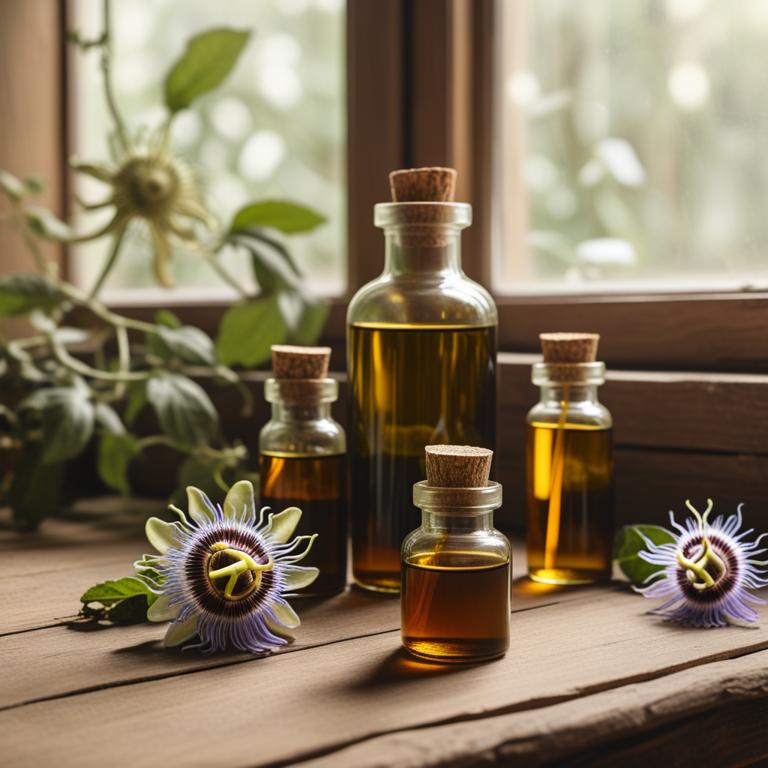
Passiflora incarnata tinctures have been traditionally used to help alleviate the symptoms of menopause, including hot flashes, anxiety, and insomnia, due to their adaptogenic and anxiolytic properties.
The bioactive constituents of Passiflora incarnata, such as flavonoids, alkaloids, and glycosides, help to modulate the body's stress response and regulate hormonal balance, thus providing relief from menopause-related symptoms.
These constituents, particularly passiflorine, flavonoids, and isovitexin, have been shown to possess anti-anxiety and sedative effects, contributing to improved sleep quality and reduced frequency of hot flashes.
By using Passiflora incarnata tinctures, women experiencing menopause symptoms may benefit from reduced anxiety levels, improved sleep, and a decrease in hot flashes, ultimately enhancing their overall quality of life.
Related Study
According to "Electronic physician", Passiflora incarnata tinctures for menopause may be effective in the treatment of acute menopausal syndrome, specifically hot flashes, as it was listed among the medicinal plants that showed efficacy in a clinical trial study between 1994 and 2016.
6. Glycyrrhiza glabra tinctures

Glycyrrhiza glabra tinctures have been traditionally used to treat menopause-related symptoms, including hot flashes and mood swings, due to their anti-inflammatory and antioxidant properties.
The bioactive constituents of Glycyrrhiza glabra, such as glycyrrhizin and flavonoids, help to reduce stress and anxiety by modulating the body's response to hormonal changes.
Glycyrrhiza glabra tinctures also exhibit adaptogenic properties, allowing the body to adapt to the fluctuations in hormone levels, thereby alleviating menopausal symptoms.
The benefits of using Glycyrrhiza glabra tinctures to treat menopause-related symptoms include improved mood, reduced hot flashes, and enhanced overall well-being.
Related Study
According to "Electronic physician", Glycyrrhiza glabra tinctures, which are derived from the medicinal plant Licorice, were found to be effective in the treatment of acute menopausal syndrome, particularly in alleviating hot flashes.
7. Panax ginseng tinctures
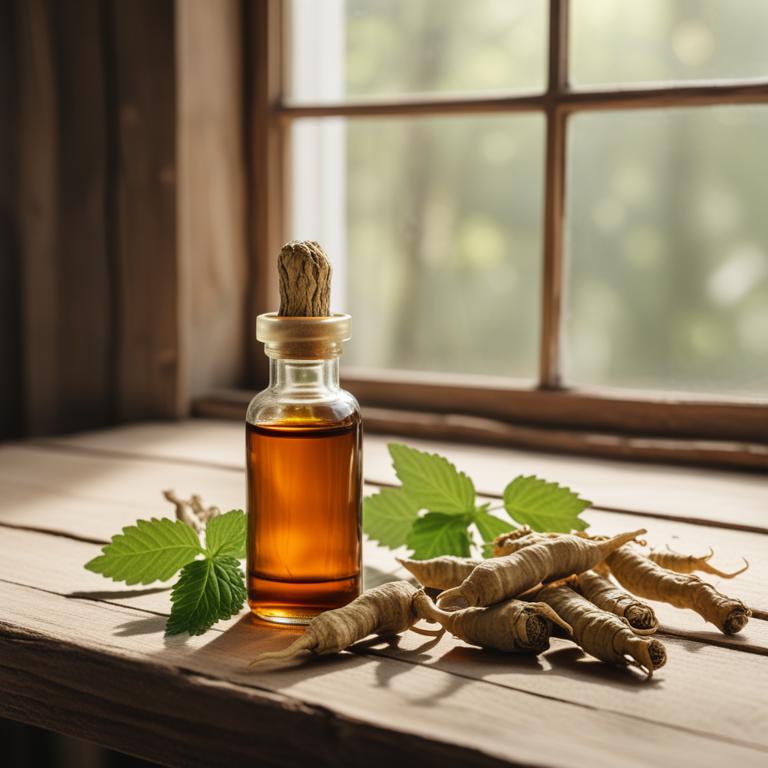
Panax ginseng tinctures have been traditionally used to alleviate menopause symptoms, such as hot flashes and night sweats, due to their adaptogenic and estrogen-balancing properties.
The bioactive constituents, including ginsenosides and saponins, help to regulate hormonal imbalances and reduce stress, thereby providing relief from menopause-related discomforts.
These herbal preparations work by enhancing the body's resilience to stress and promoting a sense of well-being, which can lead to improved sleep quality and reduced anxiety levels.
The benefits of using Panax ginseng tinctures for menopause symptoms include reduced frequency and severity of hot flashes, improved mood, and enhanced overall quality of life.
Related Study
According to "Menopause (New York, N.Y.)", Panax ginseng tinctures for menopause may be effective in improving mood and anxiety, although more research is needed to confirm its efficacy.
8. Angelica sinensis tinctures
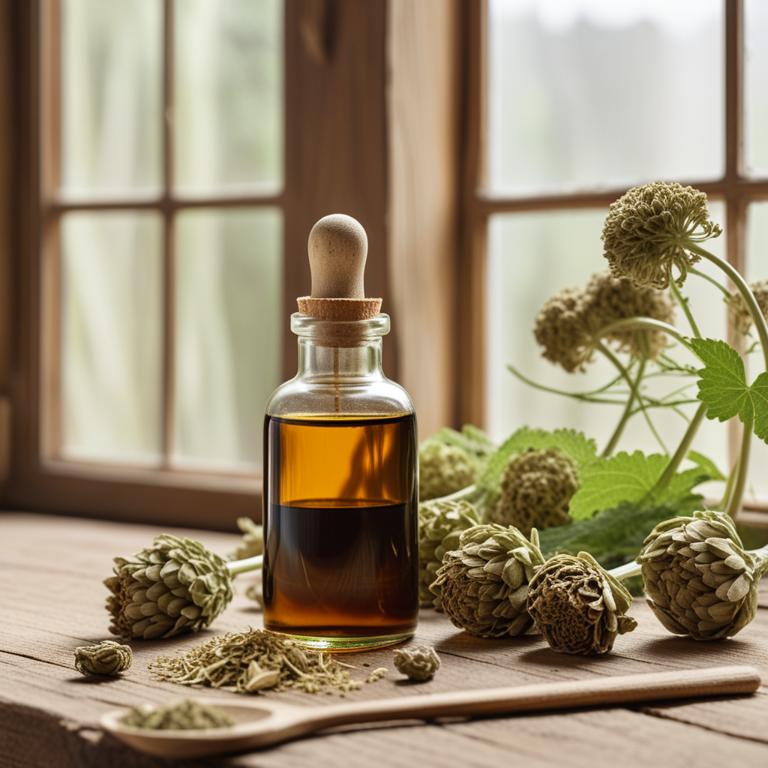
Angelica sinensis tinctures are a popular herbal preparation used to treat menopause-related ailments, particularly hot flashes and night sweats.
The properties of this herbal preparation include its ability to act as a phytoestrogen, helping to regulate hormonal imbalances associated with menopause.
The bioactive constituents of Angelica sinensis, such as ferulic acid and ligustilide, are thought to contribute to its therapeutic effects by reducing inflammation, improving cardiovascular health, and promoting relaxation.
The benefits of using Angelica sinensis tinctures to treat menopause-related symptoms include reduced frequency and severity of hot flashes, improved sleep quality, and enhanced overall well-being.
Related Study
According to "The journal of sexual medicine", Angelica sinensis tinctures for menopause may be suggested for arousal disorder studies, as it was mentioned in the study as one of the plants that may be useful in treating female sexual dysfunction, particularly in menopausal women.
9. Avena sativa tinctures
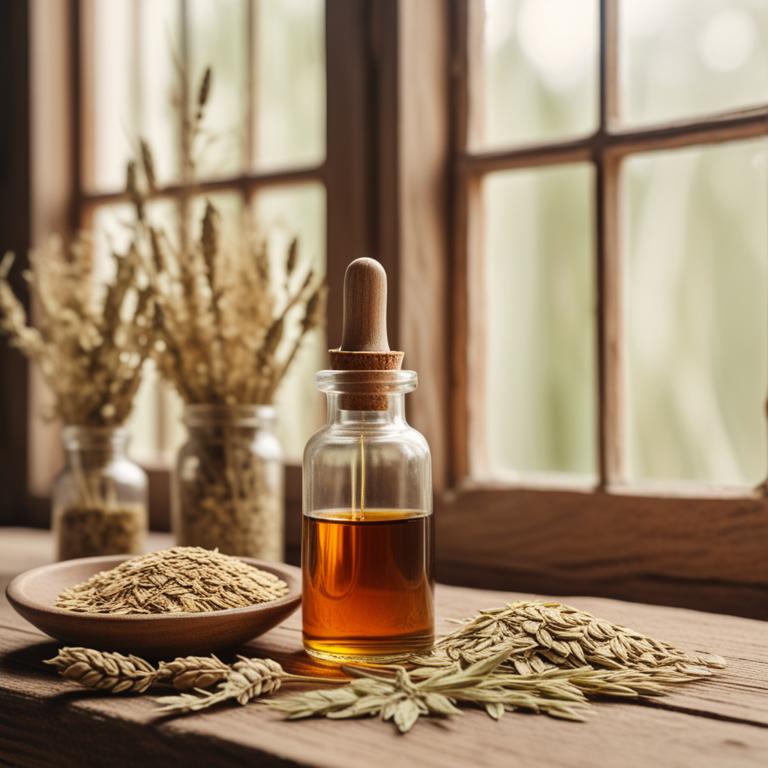
Avena sativa tinctures have been traditionally used to alleviate menopause symptoms due to their adaptogenic and anxiolytic properties.
The herbal preparation helps to treat menopause symptoms by promoting relaxation, reducing anxiety and stress, and regulating hormonal imbalances.
The bioactive constituents of Avena sativa tinctures, including flavonoids, phenolic acids, and avenanthramides, contribute to its therapeutic effects by acting as antioxidants, anti-inflammatory agents, and hormone modulators.
The benefits of using Avena sativa tinctures to treat menopause symptoms include improved sleep quality, reduced hot flashes, and enhanced overall well-being.